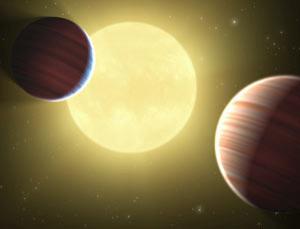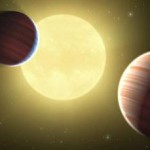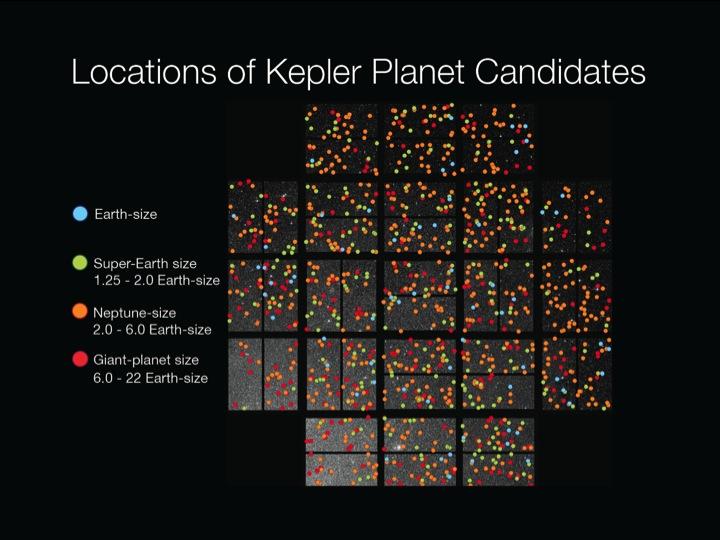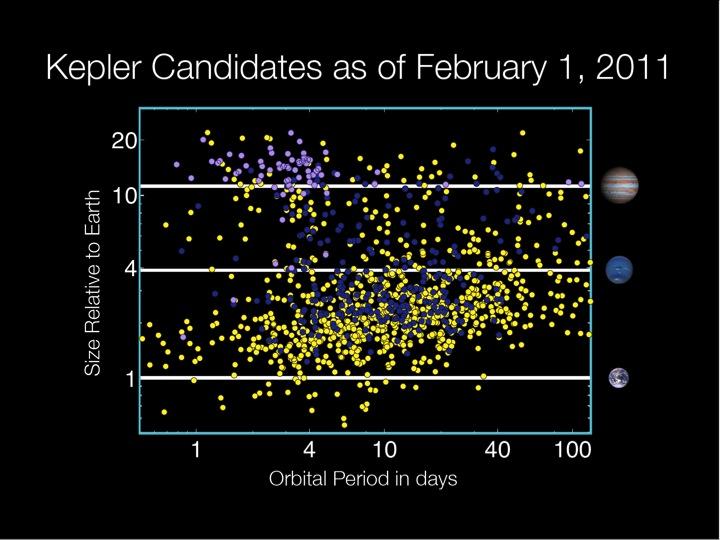Two planets found sharing one orbit!


Buried in the flood of data from the Kepler telescope is a planetary system unlike any seen before. Two of its apparent planets share the same orbit around their star. If the discovery is confirmed, it would bolster a theory that Earth once shared its orbit with a Mars-sized body that later crashed into it, resulting in the moon’s formation.
The two planets are part of a four-planet system dubbed KOI-730. They circle their sun-like parent star every 9.8 days at exactly the same orbital distance, one permanently about 60 degrees ahead of the other. In the night sky of one planet, the other world must appear as a constant, blazing light, never fading or brightening.
Gravitational “sweet spots” make this possible. When one body (such as a planet) orbits a much more massive body (a star), there are two Lagrange points along the planet’s orbit where a third body can orbit stably. These lie 60 degrees ahead of and 60 degrees behind the smaller object. For example, groups of asteroids called Trojans lie at these points along Jupiter’s orbit.
In theory, matter in a disc of material around a newborn star could coalesce into so-called “co-orbiting” planets, but no one had spotted evidence of this before. “Systems like this are not common, as this is the only one we have seen,” says Jack Lissauer of NASA’s Ames Research Center in Mountain View, California. Lissauer and colleagues describe the KOI-730 system in a paper submitted to the Astrophysical Journal.
Richard Gott and Edward Belbruno at Princeton University say we may even have evidence of the phenomenon in our own cosmic backyard. The moon is thought to have formed about 50 million years after the birth of the solar system, from the debris of a collision between a Mars-sized body and Earth. Simulations suggest the impactor, dubbed Theia, must have come in at a low speed. According to Gott and Belbruno, this could only have happened if Theia had originated in a leading or trailing Lagrange point along Earth’s orbit. The new finds “show the kind of thing we imagined can happen”, Gott says.


Will KOI-730’s co-orbiting planets collide to form a moon someday? “That would be spectacular,” says Gott. That may be so, but simulations by Bob Vanderbei at Princeton suggest the planets will continue to orbit in lockstep with each other for the next 2.22 million years at least. (NewScientist)
Did Earth Once Share Its Orbit with a Mars-Sized Planet? New Kepler Data Suggests “Yes” @ DailyGalaxy
NASA Kepler Data Release

Commenting rules and guidelines
We value the thoughts and opinions of our readers and welcome healthy discussions on our website. In order to maintain a respectful and positive community, we ask that all commenters follow these rules:
We reserve the right to remove any comments that violate these rules. By commenting on our website, you agree to abide by these guidelines. Thank you for helping to create a positive and welcoming environment for all.